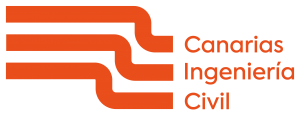Aia Joint Check Agreement
As a professional, I present to you an article on «AIA Joint Check Agreement».
The construction industry is a highly regulated and complex field, with various stakeholders, including contractors, subcontractors, and suppliers. When working on large projects, it is not uncommon for a contractor to engage the services of subcontractors to help complete the project. However, disputes may arise, particularly with regard to payment. To mitigate this, the use of joint check agreements is becoming increasingly common. In this article, we will explore what a joint check agreement is, how it works, and its benefits.
What is an AIA Joint Check Agreement?
An AIA Joint Check Agreement, also known as a joint payment agreement, is a legal document that involves three parties: the owner, the contractor, and a subcontractor or supplier. It is a written agreement that outlines the terms of payment for the subcontractor or supplier involved in the project.
How Does It Work?
The AIA Joint Check Agreement works by allowing the owner and the contractor to issue a joint check that includes both of their names and the subcontractor or supplier’s name. Once the joint check is issued, it is sent directly to the subcontractor or supplier. The joint check agreement typically includes the following details:
– The name and address of the owner, contractor, and subcontractor or supplier
– The name of the project
– The amount due to the subcontractor or supplier
– The percentage of the work that the subcontractor or supplier has completed
– The signature of the owner, contractor, and subcontractor or supplier
Benefits of an AIA Joint Check Agreement
AIA Joint Check Agreements have several benefits for all parties involved. Here are a few of them:
1. Simplifies Payment Process
With a joint check agreement, the owner and contractor can issue a single check to the subcontractor or supplier, instead of issuing separate checks. This simplifies the payment process and eliminates the need for the subcontractor or supplier to chase down payments from different parties.
2. Ensures Payment to Subcontractor or Supplier
A joint check agreement ensures that the subcontractor or supplier receives payment for their work in a timely manner. It also provides some assurance that payments won`t be delayed due to disputes between the owner and contractor.
3. Mitigates Risk of Liens
If a subcontractor or supplier does not receive payment for their work, they may file a mechanics lien against the property. This can create a big headache for the owner and contractor. With a joint check agreement, the risk of liens is significantly reduced because the subcontractor or supplier receives payment directly.
Conclusion
In conclusion, an AIA Joint Check Agreement is a legal document that provides a transparent payment process for all parties involved in a construction project. It simplifies payment, ensures timely payment to the subcontractor or supplier, and mitigates the risk of liens. As the construction industry continues to grow, the use of joint check agreements is becoming increasingly common, and it is important for owners, contractors, and subcontractors or suppliers to understand the benefits of this legal document.
